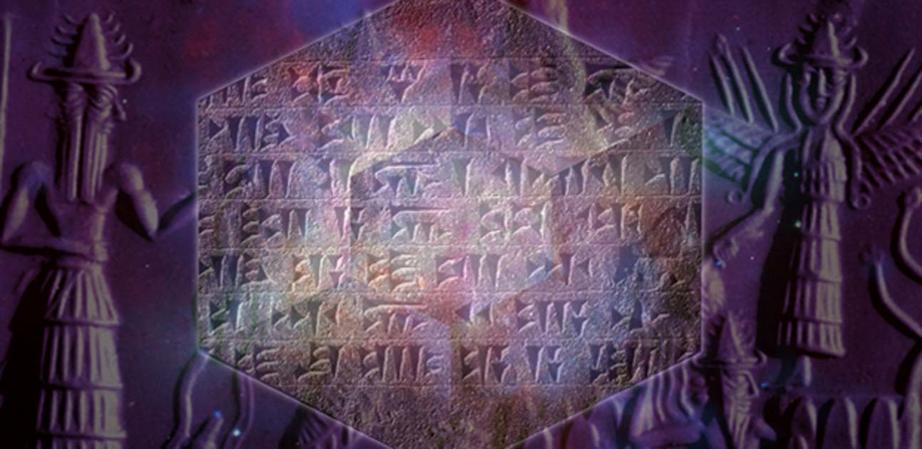Anunnaki revealed: who were these beings of ancient astronaut theory? What do the ancient texts say?
Part I
The modern era has witnessed an incredible surge in the popularity of all forms of media concerning the mythology of the ancient Mesopotamians. Fueling this ever-growing trend are the writings of a number of researchers who propose connections between several Sumerian myth cycles and the theory that the human race was engineered or created by a group of extraterrestrial beings. Known as Ancient Astronaut Theory, this field is largely reliant upon the translations of cuneiform tablets supposedly made by Zecharia Sitchin, whose series of Earth Chronicles books form the foundation upon which the modern church of the alien gods has been built.
Central to Sitchin’s narrative is a group of mythic beings known as the Anunnaki, whom he claimed crossed their own DNA with that of Homo erectus in order to create mankind—for the purpose of using humans as slaves to mine gold and other minerals. Today these Anunnaki are often portrayed as the equivalent of the Old Testament creator God.
 Anunnaki created mankind?
Anunnaki created mankind?
But what does the cuneiform corpus actually say about the Anunnaki and other mythic beings? How does the version of these beings and their activities presented in Ancient Astronaut media compare with how they were truly represented in the ancient world?
Princely Blood
To begin with, Anunnaki translates to “princely blood” or “seed of Anu”, not “those who came down” or “those who came from heaven to earth”, as many modern sources have claimed. The Anunnaki are “the Sumerian deities of the old primordial time;” a pantheon of gods who were the children of the sky god Anu and his sister, Ki. Significantly, some scholars have come to realize that the Anunnaki should more appropriately be considered demi-gods or semi-divine beings. Apparently, Anu’s sister Ki was not originally considered a deity and was only ascribed the status of a goddess much later in the history of the myth cycle.
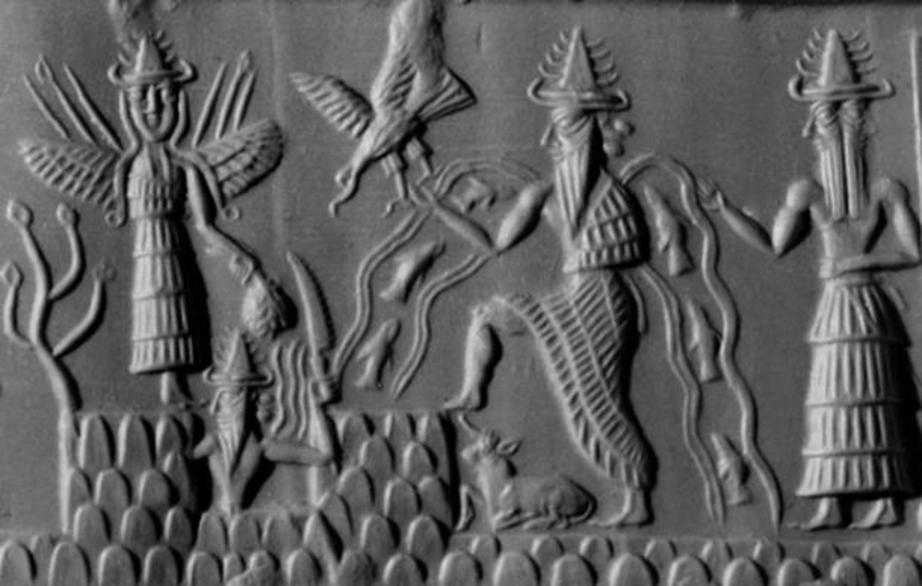 Akkadian cylinder seal dating to circa 2300 BC depicting the deities Inanna, Utu, and Enki, three members of the Anunnaki.
Akkadian cylinder seal dating to circa 2300 BC depicting the deities Inanna, Utu, and Enki, three members of the Anunnaki.
As explained by William Klauser:
“Some authorities question whether Ki was regarded as a deity since there is no evidence of a cult and the name appears only in a limited number of Sumerian creation texts. Samuel Noah Kramer identifies Ki with the Sumerian mother goddess Ninhursag and claims that they were originally the same figure. She later developed into the Babylonian and Akkadian goddess Antu, consort of the god Anu (from Sumerian An).”
Essentially, this would mean that the Anunnaki were born of a union between a sky god and a mortal female, who was later deified in mythic traditions.
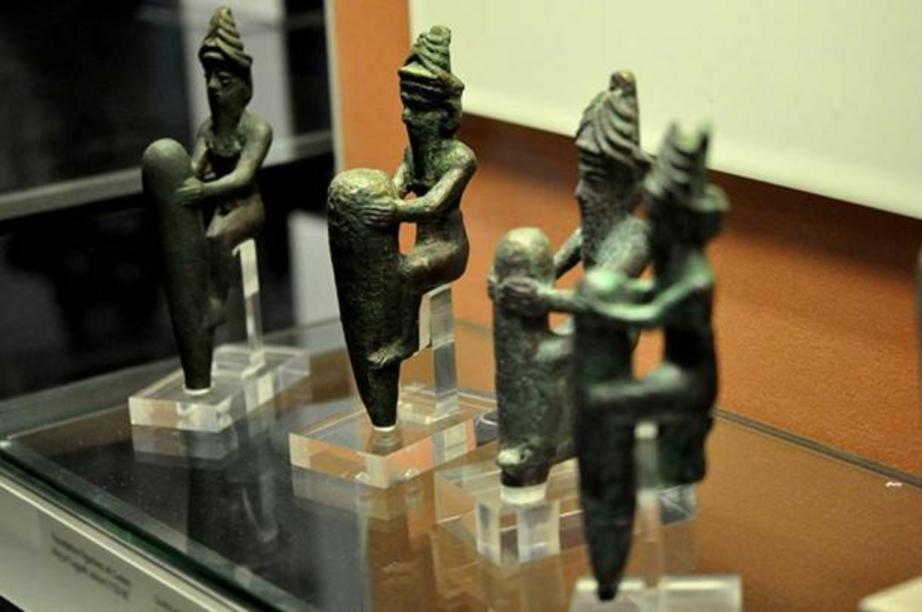 Four copper-alloy statuettes dating to c. 2130 BC, depicting four ancient Mesopotamian gods, wearing characteristic horned crowns.
Four copper-alloy statuettes dating to c. 2130 BC, depicting four ancient Mesopotamian gods, wearing characteristic horned crowns.
From Dust to Dust
Furthermore, “Ki” is the Sumerian sign for “earth”, and Anu’s consort is sometimes considered the personification of the earth itself. This is similar to Biblical tradition, where mortals were created out of the dust of the earth (Genesis 2:7). The concept of a group of half-divine beings born of mortal women is very similar to the Biblical and extra-Biblical tradition of the Nephilim. One of the most heavily referenced ancient texts which describes the Nephilim is the Extra-Biblical Book of 1 Enoch attributed to the patriarch Enoch, son of Jared and father of Methuselah. 1 Enoch is considered an apocryphal text today, and is rejected by most mainstream theological establishments, but this was not always the case. Many of the early Church Fathers, such as Athenagoras, Clement of Alexandria, Irenaeus, and Tertullian accepted the book as scripture, and fragments of 10 copies of 1 Enoch in Aramaic have been found among the Dead Sea Scrolls. 1 Enoch is also quoted in the Biblical Book of Jude, and it has been estimated that there are as many as several hundred more references throughout the New Testament itself.
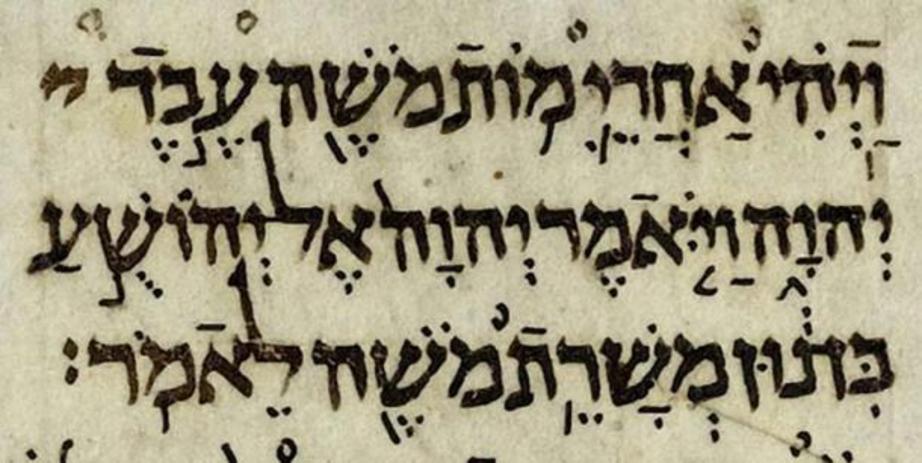 Joshua 1:1 as recorded in the Aleppo Codex, 10th century AD
Joshua 1:1 as recorded in the Aleppo Codex, 10th century AD
Sons of God, Daughters of Man
The most famous portions of 1 Enoch feature an elaboration on certain events before the deluge recorded in the Bible (specifically Genesis chapter 6, verses 1-4). According to 1 Enoch, a group of 200 fallen angels known as the Watchers, led by an individual named Semyaza (or Semjaza) descended upon Mount Hermon, where they swore an oath to father lineages with human women. Each of these “took unto themselves wives, and each chose for himself one, and they began to go in unto them and to defile themselves with them”, a union which resulted in the birth of “great giants”. These giants eventually “consumed all the acquisitions of men”, and, “when men could no longer sustain them, the giants turned against them and devoured mankind.” (1 Enoch, Ch. 6-7) These activities provoke the action of God, who curses the giants to war against one another “that they may destroy each other in battle”, and sends the archangels to bind the Watcher leadership “in the valleys of the earth”. (1 Enoch 10) As is well known today, the Hebrew texts refer to the powerful beings born to the Watchers as The Nephilim.
Location of the Sanctuary of the Anunnaki
Scholars have found profound similarities between the mythologies of the Anunnaki and the Nephilim. In 1971, Edward Lipinski published a scholarly analysis of several ancient texts, including the Old Babylonian version of the Epic of Gilgamesh, all which feature important details revealing the true location of the sanctuary of the Anunnaki in ancient Eastern thought and cosmology. Lipinski found that: “In fact, the Old Babylonian version of the [Gilgamesh Epic] identifies Hermon and Lebanon with the dwelling of the Anunnaki”. He emphasizes lines 12-21 of the Old Babylonian Gilgamesh, which tell of the destruction of Humbaba, the guardian of the abode of the gods at the hands of Gilgamesh’s companion Enkidu, after which the text states that the two “penetrated into the forest, opened the secret dwelling of the Anunnaki.” While later mythologies suggest alternate locations for the home of the Anunnaki, Lipinski explains that the oldest Mesopotamian and Near Eastern Canaanite texts point to the Cedar forest of Mount Hermon:
“…traces of the older tradition can be found in the mention of the mountain which was the abode of the gods, and whose accesses were hidden by the Cedar Forest whose guardian was Humbaba. This mountain was, we believe, the Anti-lebanon-Hermon…The southern range of the Anti-Lebanon is therefore likely to be the mountain in whose recesses the Anunnaki dwelled according to the Old Babylonian version of the Gilgames epos. In the Old Babylonian period the Anunnaki were still the gods in general….Mount Hermon should thus be identified with the dwelling of the gods.”
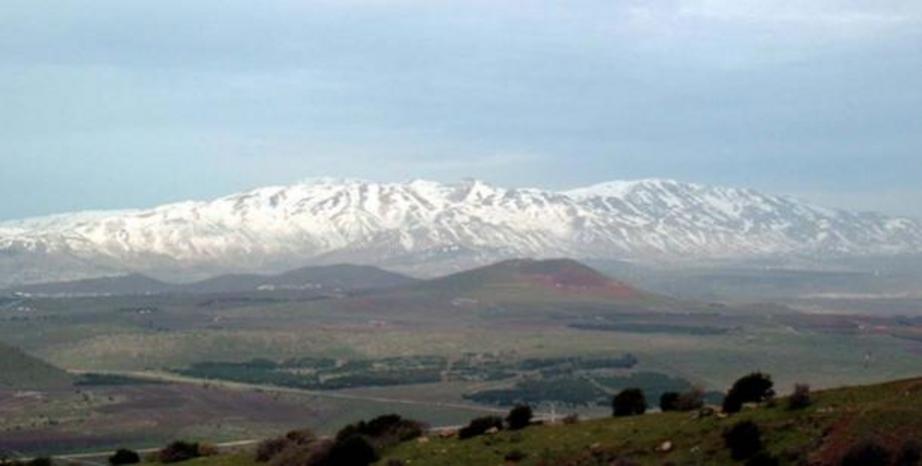 Snowy Mount Hermon.
Snowy Mount Hermon.
Heaven and Earth Join
Lipinski also points out the fact that Mount Hermon was considered the guardian of international treaties in the ancient world, and connects this tradition with the oath sworn by the Watchers in 1 Enoch. Incorporating apocryphal texts such as The Testament of the Twelve Patriarchs and 1 Enoch into his study, Lipinski concludes:
“Mount Hermon is the cosmic mountain which joins the earth with the lowest heaven. The same conception lies behind the episode of the sons of God in the Book of Enoch. The celestial beings gather on the summit of Mount Hermon because this is the mountain of the gods, the Canaanite Olympus.”
Mount Hermon is located at the southern end of the Anti-Lebanon mountain range, straddling the borders of Syria and Lebanon. Hermon’s highest peak reaches 9,232 feet (2814 meters). The area abounds with ancient altars going back millennia, and was still the host of shrines and rituals as recently as the time of Constantine the Great. Of further significance is the fact that Gilgamesh was renowned in the ancient world for obtaining knowledge from the pre-flood (or “antediluvian”) world, as stated by the Ugarit Epic of Gilgamesh (lines 5-9):
“He explored everywhere the seats of power, he knew the totality of wisdom about all things. He who travelled the distant road to Utter-napisti, who crossed the ocean, the wide sea, as far as the sunrise: he brought back tidings from the antediluvian age.”
These passages bring us full circle with Lipinski’s interpretation of the Old Babylonian version of the Gilgamesh epic, where the ancient king journeyed to Mount Hermon—abode of the Anunnaki…

